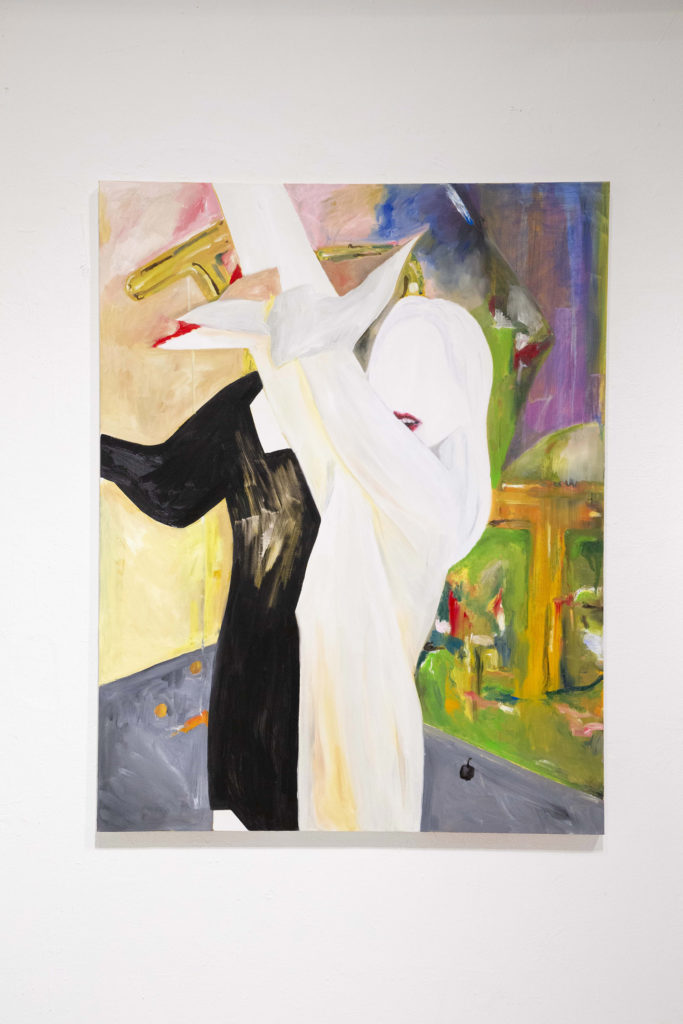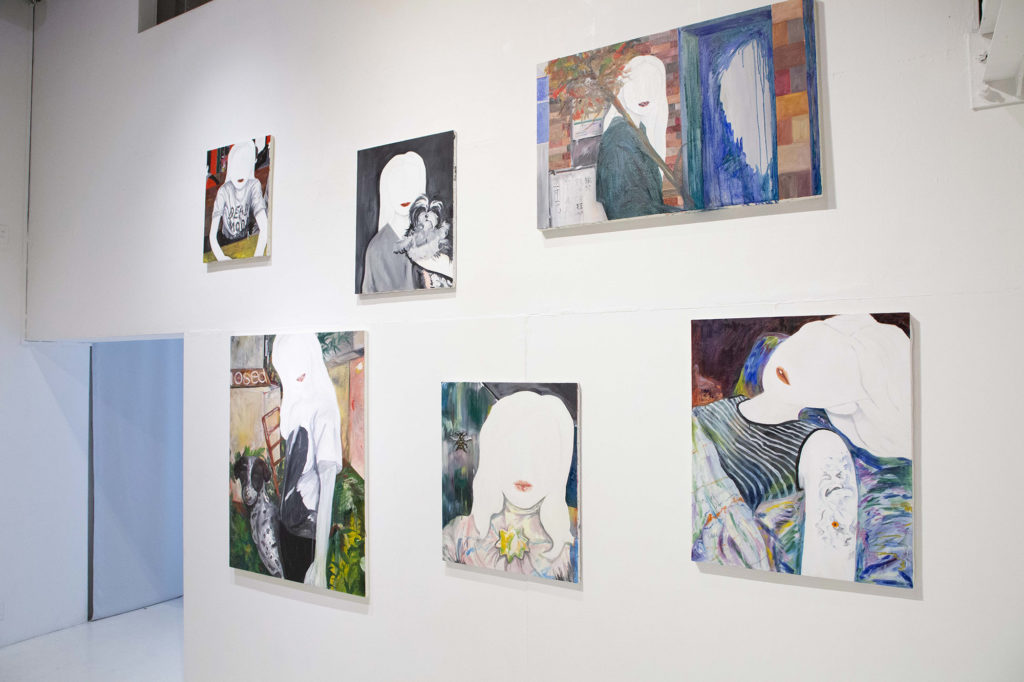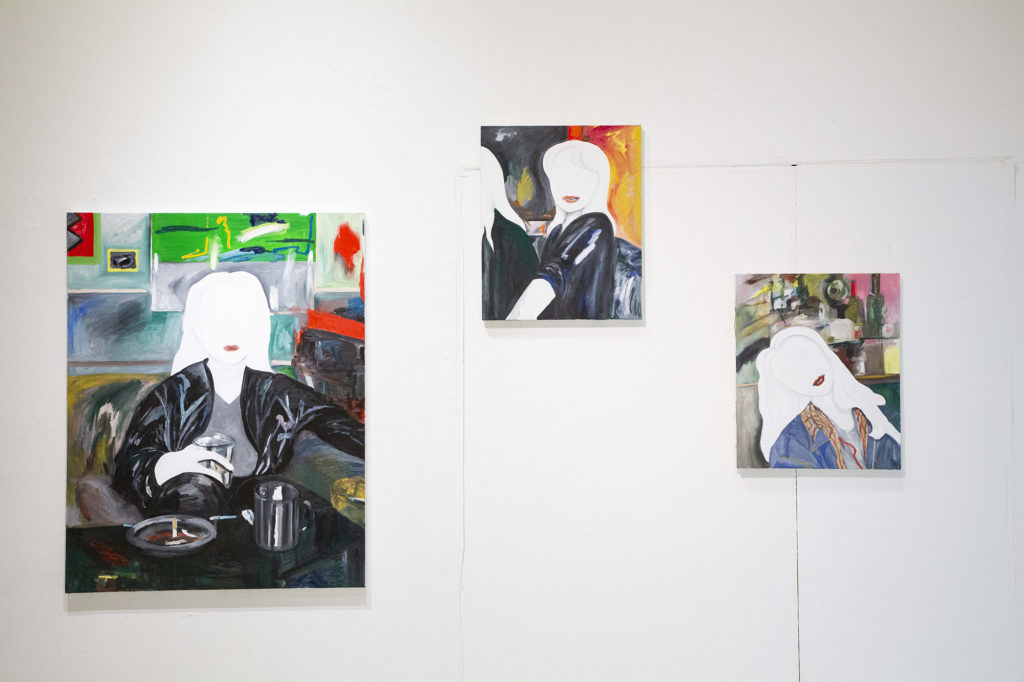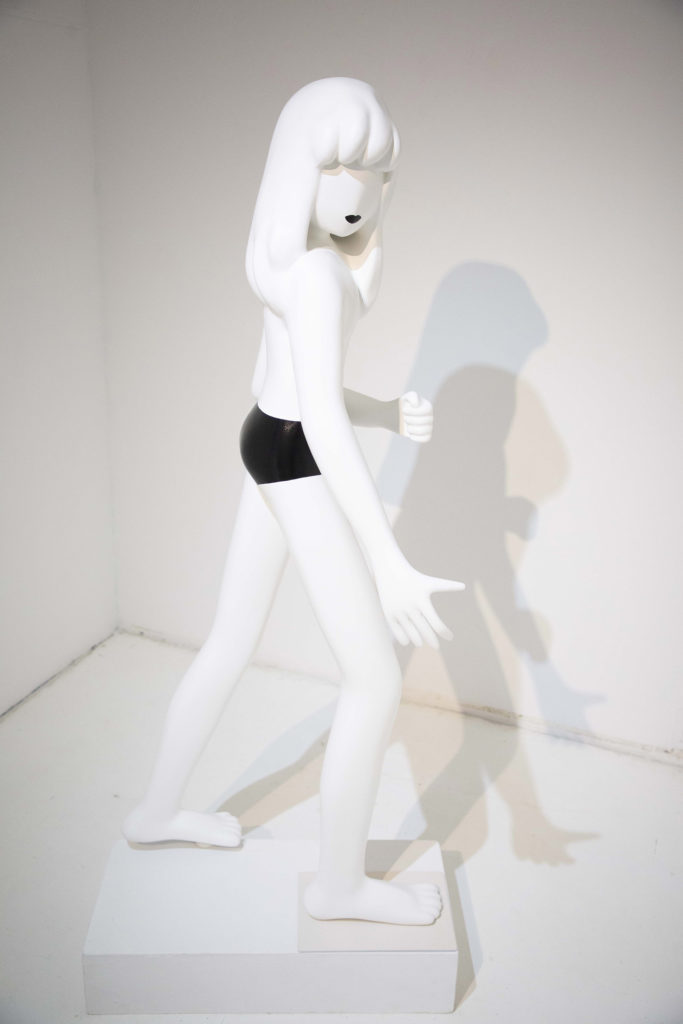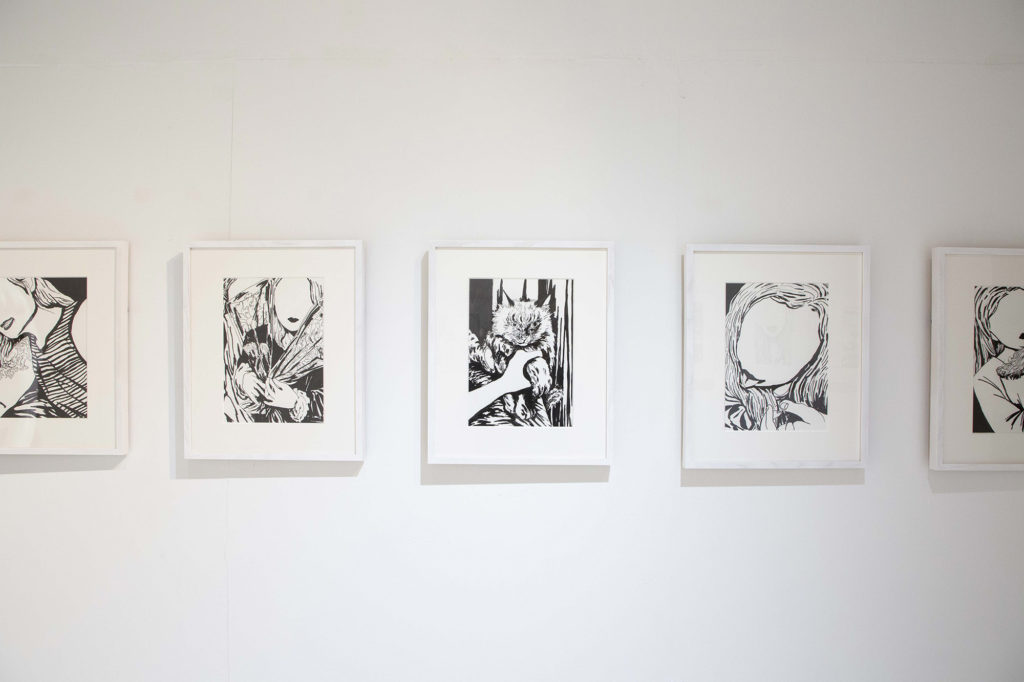Including a solo exhibition in Taiwan back in August, AUTO MOAI is an artist whose work is expanding beyond Japan’s borders. In November, AUTO MOAI held two simultaneous solo exhibitions, Anonymous at Shinjuku’s B GALLERY and Buoy at Nishi-Azabu’s CALM & PUNK. Although AUTO MOAI maintains the same central motif of people without faces, Anonymous made use of acrylics for a more pop art-like, symbolic feel, while Buoy uses raw brush strokes and oil paints, giving viewers a completely different impression. TOKION asked AUTO MOAI about their recent exhibitions, including their intentions, new techniques and themes of their work.
I think that the idea of an individual within society is really vague and fragile.
――So first, why do you work as an anonymous artist?
AUTO MOAI: I don’t think that information regarding my age, gender, appearance, or stature are necessary for people to look at my work.
――You had two solo exhibitions at the same time going on, one at B GALLERY and another CALM & PUNK. Could you tell me about these exhibitions in relation to one another?
AUTO MOAI:Both of the exhibitions feature portraits, so I thought it would be interesting to differentiate them through the presentation and texture. With my work at B GALLERY, I imagined people who were inhuman and symbolic, and painted them in a pop style with acrylics. On the other hand, my work at CALM & PUNK was based on living people and human connections, painted in reference to photographs.
――Your B GALLERY exhibition was titled Anonymous. Anonymity is an important theme in your work, and I think it connects to your main motif of people without faces. Could you tell me about what anonymity means to you, and why you chose that theme for your work?
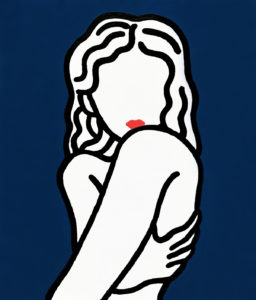
AUTO MOAI:The theme of anonymity in my work has been present since I first started painting, and it hasn’t changed. At the time, I really strongly felt that I wasn’t special, that I was just one human being amongst many. And living in a world with that point of view, I couldn’t even imagine people with faces. Since then, I’ve been painting people without faces. I think that the idea of an individual within society, including myself, is a really vague and fragile thing.
From a buoy’s perspective, it doesn’t know what’s here or there.
――Your exhibition at CALM & PUNK is inspired by the concept of a buoy. What were the intentions and thoughts behind this?
AUTO MOAI:I’d been thinking, “Buoy is such a strange word,” and “What’s that thing floating in the sea?” As I was thinking about it, I came to realize that buoys are like human relationships. A buoy, which floats as it marks location and depth, feels symbolic of a person’s place in society and their relationships. The fact that these similar entities are side by side, close, yet far away, is similar, isn’t it? And from a buoy’s perspective, it doesn’t know that there are similar things placed at equal intervals beside it, or what’s the sea and what’s the shore. I think that’s really close to what I feel going through my everyday life. That feeling is the theme of this exhibition.
――It stood out to me that your work in Buoy uses different color palettes and brush strokes compared to your work up until now. There’s a sense of rawness, but at the same time, parts of it are hazy, almost like a ghost…
AUTO MOAI:With Buoy, I wanted to paint about human relationships and distance, so I created these works based off of photos I took on my iPhone while hanging out with people. People can’t prove their own existence unless someone else is standing in front of them, right? In that way, I think even though the person in front of me is the one in the picture, you could say that I, the photographer, am also in the picture. Also, the people in the picture look like they’re people who passed away, even though they’re alive. I was reminded of what people in the old days used to say about a photograph stealing your soul. The perspective of a buoy, the theme of this exhibition—the feeling of not knowing what’s the sea and what’s the shore, what’s here and what’s there—is connected to that. I think that’s why the people in the paintings look like ghosts.
――Is the method of painting from photographs something you’ve been doing for a while?
AUTO MOAI:No, this is my first time doing it. It was interesting to see how even though they’re a scene from real life, when you make it into a painting, the difference between reality and art grows. Even if it’s a regular picture taken on my iPhone, it transforms into a work of art when it’s reconstructed into a painting. I’d like to keep experimenting with this method.
――In Buoy, you also have some monochrome pieces and sculptures in addition to your color works.
AUTO MOAI:I thought it’d be nice if people had a variety of things to look at. Some of the monochrome works were bases for the color paintings, and these were painted from photographs too. Regarding the sculpture, I created one for Tacking City Nihonbashi in 2019, and I thought that next time, I wanted to create three-dimensional pieces using different materials. So I created one for this exhibition.
――Do you want people to feel a certain way or see something in a certain way when they look at your work?
AUTO MOAI:I want people to enjoy it however they like. Whether you like the colors, or the animal in the picture looks like your pet, or a place looks like somewhere you know, or you imagine the feeling of the person in the painting…it’s up to the viewer to feel however they want. All of my work has personal meaning, but when people look at my work, I hope that they interpret it in their own way, and notice something or gain new perspective. I always believe that should be the role of the work, and once the piece is out of my hands, it belongs to the viewers.
――Do you have any plans or things you’d like to try in the future?
AUTO MOAI:I’d like to keep working on my current series [painting from photographs]. With regards to three-dimensional pieces, I’d like to do that if the opportunity arises. I think it’d be nice to create something a bit bigger next time. Also, to the extent that it’s possible, I’d like to challenge myself to try animation or something I’ve never done. Personally, I think two-dimensional pieces are my favorite, but maybe there’s something else I could get into. I won’t know until I try.
*
AUTO MOAI
AUTO MOAI is an artist working in Japan around the theme of anonymity. AUTO MOAI depicts the relationships between people who are tacitly connected to each on the streets, which are hard to visualize, with faceless people. His main work includes the exhibition Permanent Boredom (TAV GALLERY, Tokyo, 2019), an 8m sculpture at Tacking City Nihonbashi (Tokyo, 2019), a 300-page collection of drawings, Endless Beginning (Funshosha, 2018), and ANGEL (Parco Publishing, 2019), a collection of drawings celebrating the reopening of Shibuya PARCO.
auto-moai.tumblr.com
Instagram:auto_moai
Twitter:auto_moai
Photography Kentaro Oshio
Translation Aya Apton


